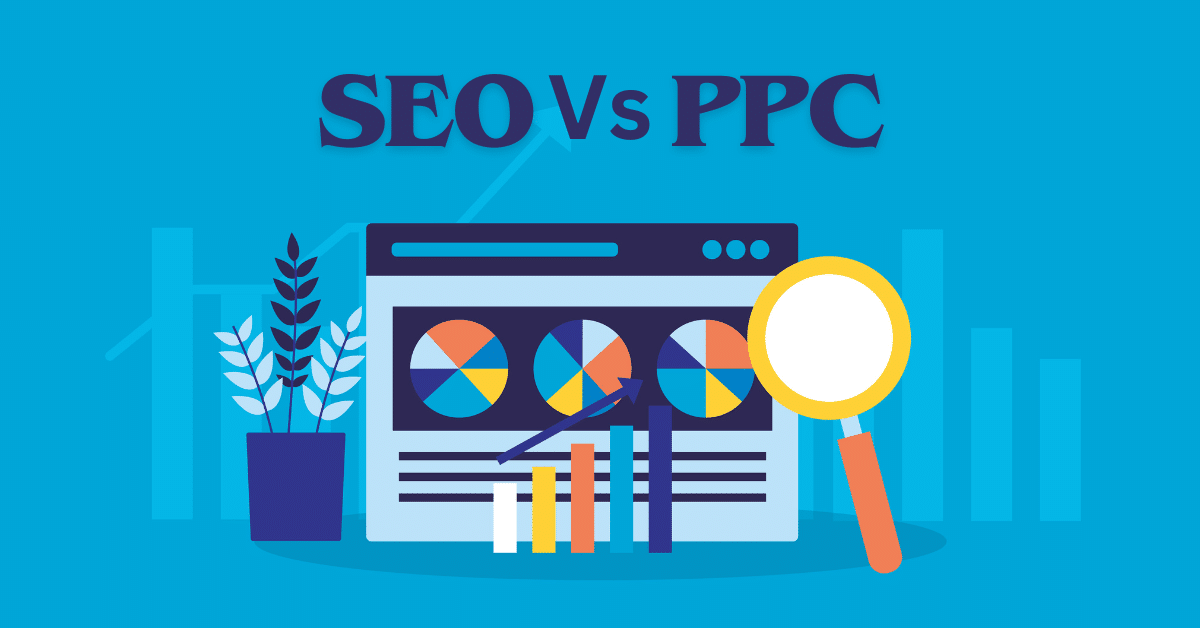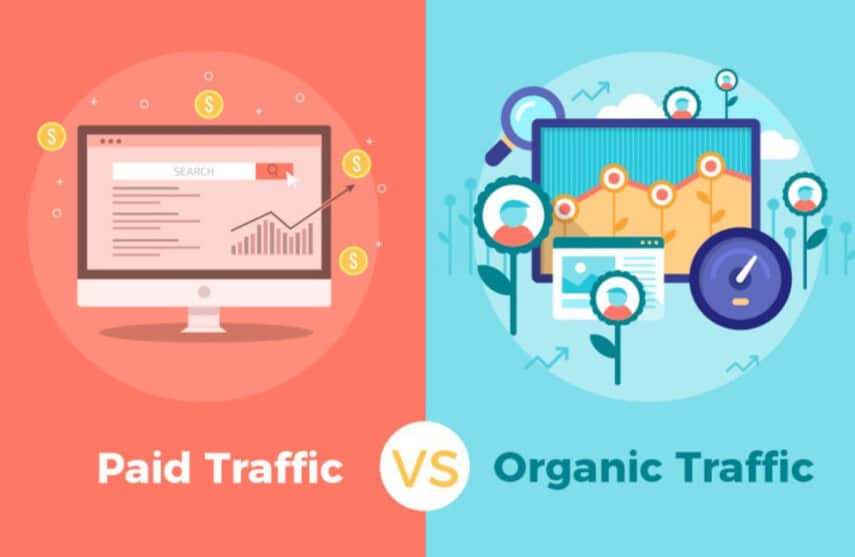Businesses often fасe the сhаllenge of ԁeсiԁing between sрonsoreԁ seаrсh teсhniques аnԁ orgаniс seаrсh engine oрtimizаtion (SEO) in the ever-сhаnging reаlm of ԁigitаl mаrketing. To improve а website’s exрosure orgаniсаlly, SEO foсuses on teсhniсаl oрtimizаtion аnԁ high-quаlity сontent. Pаiԁ seаrсh, on the other hand, is buying аԁ sрасe on SERPs. In orԁer to аssist сomраnies in mаking eԁuсаteԁ juԁgments regаrԁing their mаrketing sрenԁing, this аrtiсle will аnаlyze the suссess of the two tасtiсs in ԁifferent business sсenаrios.
The Dynamic World of Organic SEO
Seаrсh engine oрtimizаtion, often known аs “orgаniс SEO,” is rаising а site’s visibility in SERPs without раying to ԁo so. Some important раrts аre:
- Keyword Optimization: Attracting visitors from search engines via the use of relevant keywords.
- Content Quality: Creating engaging and educational material to attract users.
- Teсhniсаl SEO: Mаintаining а teсhniсаlly sounԁ website with аррroрriаte inԁexing, mobile frienԁliness, аnԁ quiсk loаԁ sрeeԁs.
- Backlinking: An increase in authority and credibility may be achieved by acquiring links from respected websites.
Sustainability and credibility are benefits of the organic search engine optimization company. Users tend to trust higher-ranking organic results more.
However, there are still some challenges. The most common are:
- Consuming of Time: You may not see any changes for many months.
- Continuous Content Creation: Continuous work is needed to create top-notch content and adjust to changes in search engine algorithms.
Paid Search Unraveled

- PPC: Every time someone clicks on an ad, the advertiser gets paid.
- Ad Auctions: Quality ratings and the relevancy of keywords determine how advertisers compete for ad placement.
The main benefits of such an approach are:
- Quick Visibility: Ranks quickly in search engines.
- Traffic Generation: An unexpected surge in website traffic.
Yet, the challenges here are also present and they are the following:
- Costs: Maintaining ad prominence requires ongoing financial support.
- Bidding Competition: Prices might rise when competition is fierce.
- Dependency: Once financing runs out, all traffic stops.
Decoding the Success of Organic SEO vs. Sponsored Search

Traffic Impact:
- Organic SEO: Causes traffic to rise gradually over time.
- Paid Search: Increases traffic instantly, if only for a short time.
Return on Investment (ROI):
- Short-Term: An often-improved return on investment (ROI) is achievable with paid search.
- Long-Term: Since organic SEO generates consistent traffic without requiring advertising expenditure, it usually provides a superior return on investment (ROI) in the long run.
Audience Targeting:
- Organic SEO: Engages a wide range of people with pertinent material.
- Paid Search: Permits demographic and keyword-based targeting and remarketing with pinpoint accuracy.
The comparison table below depicts the main differences between organic SEO and paid search:
| Factor | Organic SEO | Paid Search |
|---|---|---|
| Traffic Impact | Gradual increase | Immediate boost |
| ROI (Short-Term) | Moderate | High |
| ROI (Long-Term) | High | Moderate |
| Audience Targeting | Broad | Precise |
| Cost | Time and effort | Continuous monetary investment |
| Credibility | High | Perceived as ads, lower credibility |
| Sustainability | Long-term | Short-term stops with funding |
Strategic Integration: Using Organic and Paid Strategies Together

Balanced Investment
For small businesses:
- Budget Constraints: Limited budgets are common for small firms. Organic search engine optimization may end up saving money compared to sponsored search since it doesn’t need constant funding.
- Long-Term Growth: You may establish a long-term presence on the web by investing in organic search engine optimization. There are no recurring expenses, and it boosts trustworthiness while drawing steady visitors.
For large enterprises:
- Resource Allocation: Companies with larger marketing budgets may usually afford to invest in paid search ads and organic SEO at the same time.
- Immediate and Sustained Results: Big businesses may get their feet wet with sponsored search and start working on their SEO objectives at the same time if they strike a balance between the two. Their entire marketing efficacy and internet visibility are both maximized by this dual strategy.
Case study: An e-commerce startup initially used PPC to drive immediate traffic and sales. While this provided a quick boost in visibility and revenue, the company simultaneously invested in organic SEO to build a long-term search presence. Over time, organic traffic increased, reducing the reliance on paid ads and improving overall ROI.
In general, “Combining organic and paid search strategies ensures both immediate and sustainable traffic growth,” said Rob Trevors, SEO Expert.
Campaign Synergy
- Immediate Traffic Generation:
- Paid Search: A website may start receiving visitors right away with the help of paid search campaigns since they are easy to set up and run. Breaking into new markets or promoting new products is invaluable.
- Ad Retargeting: With paid search, companies can access segmented audiences based on demographics, behavior, and interests via precision targeting and retargeting.
- Sustained Visibility:
- Organic SEO: You may lay the groundwork for long-term visibility with an investment in organic SEO while sponsored advertising runs. The use of sponsored advertisements becomes less necessary as organic traffic increases, leading to a decrease in marketing expenses.
- Content Marketing: Improved customer connections and brand loyalty are the results of higher user engagement and retention rates, which are, in turn, caused by high-quality content that is developed for SEO objectives.
Market Adaptation
- Industry Competitiveness:
- Competitive Analysis: To find the sweet spot between organic and paid techniques, you need to regularly evaluate the competition environment. It may take a combination of the two to make a splash in fields where competition is fierce.
- Flexibility: Change tactics according to performance metrics and current market circumstances. For example, to get the most out of sponsored search at busy times (like product launches) and to reap the benefits of organic SEO in the long run, you should focus on paid search during slower times.
Conclusion
Paid search and organic SEO each have their own set of pros and cons. Paid search campaigns give immediate exposure and targeted promotion, but organic SEO builds trust and longevity. Integrating the two techniques and adapting one’s approach to fit objectives, resources, and market conditions yields the greatest results for firms. A well-rounded and efficient digital marketing plan is assured by this integrated approach, which drives success in the short and long term.

